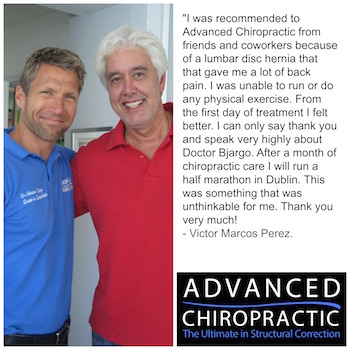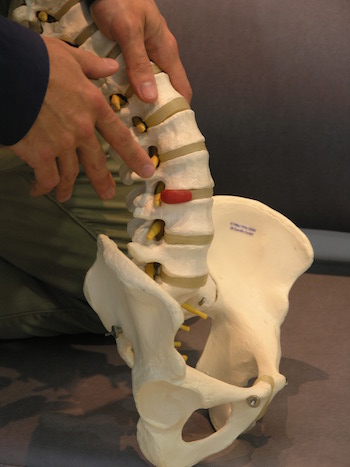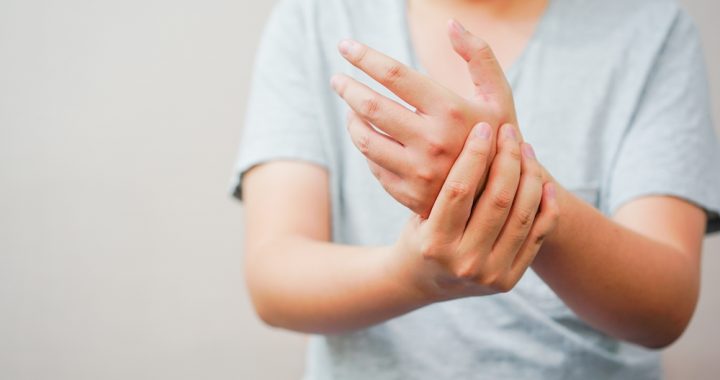 Disc injury in the low back is commonly referred to as a “slipped disc“. This is a common cause of low back pain in the general adult population up to the age of 60.
Disc injury in the low back is commonly referred to as a “slipped disc“. This is a common cause of low back pain in the general adult population up to the age of 60.
Disc injuries vary in location and degree, from micro annular tears to full-blown hernias with displacement of disc material. As the name suggests, they involve damage to the Intervertebral Discs (IVDs) in the vertebral column.
IVDs provide the vertebral column with shock absorption and flexibility. They are rounded in shape and consist of a tough fibrous outer layer and a softer gel-like nucleus. Their unique physiological structure allows them to absorb compressive forces to the spine throughout the day by slowly releasing the water contained in their nucleus and decreasing in height.
The water is then reabsorbed during the night when the spine is relaxed and free from the loading of the standing posture. As the water is reabsorbed the discs regain their height and are ready to serve their functions once again.
So how can the disc be injured?
Injuries to IVDs are either caused by violent traumas, which exceed the shock absorption capabilities of the disc or by improper loading.
Improper loading is by far the most common cause of disc injuries. The curves in the vertebral column, namely the cervical, thoracic and lumbar curves allow for any weight acting on the body to be correctly distributed on the discs through movement. Often bad posture and incorrect movement patterns cause the normal curves in the lumbar and cervical area to be lost under loading. Flexion in the lumbar and cervical areas stretches the posterior outer layer of the IVD by pushing the nucleus material back against it.
Unfortunately, the IVD’s structure is not designed to withstand shear forces to its posterior margin, so it buckles and tears under load. If improper loading of an IVD is repeated long enough (months, years at times) even picking up a light object in the garden might be sufficient to cause the outer layer to reach its resistance limit and finally buckle.
How are the nerves affected?
Interestingly enough, direct pressure of a prolapsed or herniated disc on a nerve root is not very common. In most cases, it is the body inflammatory response to the tear in the IVD’s outer layer, which causes swelling and eventually irritation of a nerve root or spinal cord level.
The most common areas of the spine affected by disc injuries are the cervical area and the lumbar area. Symptoms can vary from local pain, to pain and/or pins and needles down one or both arms or one or both legs. Muscle function in the upper and lower limb might also be affected.
So how can chiropractic help?
In the acute phase, prone disc pumping (downward pressure at the injured level) can speed up the re-absorption of the inflammation and allow for a faster recovery.
Moreover, adjusting the dysfunctional segments in your spine allows for normal biomechanics to be restored and for the disc to start healing.
Finally, regular check ups on correct function of your spine and rehabilitative exercises (Redcord) will minimize the chances of re-injuries while allowing for the IVD to fully heal, a process that can take from 12 to 18 months after the symptoms have disappeared!
How do you know if you have injured a disc?

OLYMPUS DIGITAL CAMERA
You could be experiencing pain in the low back and down the leg or pain in the neck, shoulder, arm and hand. These symptoms could feel worse with coughing/ sneezing and could make walking or moving your arm difficult.
If you are experiencing any of the above symptoms or you are concerned about improper loading of your spine while at work or at home book a neurostructural examination today with one of our chiropractors.
The chiropractor will test the responsiveness of your nerves to determine whether they are being affected or not. He will also assess the structure and alignment of your spine and provide you with a tailored corrective care plan.



